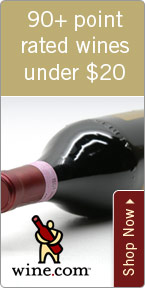The Beaujolais Beyond Nouveau

Wednesday - August 06, 2008
| Share
 Del.icio.us
Del.icio.us
|
Beaujolais is often vilified because most people see it as simple, fruity and soft with neither complexity or depth nor any ability to age. Most wine drinkers regard it with disdain, as their only exposure to Beaujolais is through Beaujolais Nouveau, that pleasant and fruity red wine released on the third Thursday of November each year to hordes of thirsty wine drinkers.
But there is so much more to Beaujolais beyond Nouveau. In fact, Beaujolais can produce wines of distinction and quality that even connoisseurs would be happy to drink, and that can age gracefully.
As in any region, there are large industrially made wines, and then there are boutique artisan wines that produce so much more character from the Gamay grape than their larger-than-life quantity counterparts.
There also are certain areas that are better than others in Beaujolais. Here they are called Cru - 10 of them in all. From North to South they are Julienas, Saint Amour, Chenas, Moulin a Vent, Fleurie, Chiroubles, Regnie, Morgon, Cote de Brouilly and Brouilly. These villages have better suited soil type (primarily schist and granite) and exposure (usually southeast sloping hillsides) than the rest of Beaujolais.
Other factors that set these wines apart from the “regular” Beaujolais are the philosophy and style of winemaking that the top producers of Cru Beaujolais employ. The large majority of Beaujolais producers chaptalize their wines. This is the (not-so-cool) practice of adding cane/beet sugar to the wine during fermentation in order to artificially increase its alcohol content. This gives the wine a thicker, richer palate without actually adding any flavor. The best producers do not chaptalize. They also keep their vineyard yields low in order to concentrate the flavor of the wine in the vineyard rather than in the winery.
So how do they taste? They certainly taste much different from the fruity but vapid Beaujolais I’ll bet you are used to. The best still have a wonderfully fruity, raspberry and strawberry bubblegum aroma, but backed up with a scent of wet stone, nutmeg and cinnamon spices.
Each different Cru having its own identity, here are some generalized patterns of the wines. The fruitiest and softest tend to be Fleurie, Chiroubles, Chenas, Regnie, Julienas and St. Amour. The most earthy and structured usually come from Moulin A Vent. And the finest combinations of both usually come from Morgon, Brouilly and Cote de Brouilly.
When you taste the cream of these wines, you may find yourself thinking that they are more like fine Pinot Noir. They are silky and seductive with a more fruity side, which is not to say they are sweet. But they present themselves with a softer edge, a roundness that is engaging as well as thirst-quenching. Served lightly chilled, they are something to truly enjoy as they give more complexity and depth than you can imagine. They are also an amazing accompaniment to a broad array of cuisines. They are not too heavy to overpower many fish dishes. They have enough acidity to complement vinegar and salads. And they are remarkably sturdy when going together with red meat. What more could you want?
Here is a short list of some of my favorite producers. (All retail for around $20.)
Domaine Chanrion. Cote de Brouilly made by Nicole Chanrion is quite like nothing else. Elegant, soft, sexy and absolutely delicious.
Chateau Thivin. Cote de Brouilly made by the Geoffray family since 1877! This wine has more dark fruit and density than the Chanrion version and can age remarkably well.
Domaine Foillard. Foillard’s Morgon is always one of the top wines of the vintage combining power and finesse.
Domaine Lapierre. Marcel Lapierre’s Morgon is what I call Grand Cru in Beaujolais.
Domaine Diochon. Moulin a Vent at its best-deep, brooding black fruit and a powerful finish.
Domaine Chignard-Fleurie. If there is a better Beaujolais Fleurie, I have not had it.
Roberto Viernes is a master sommelier. E-mail .(JavaScript must be enabled to view this email address)
E-mail this story | Print this page | Comments (0) | Archive | RSS Comments (0) |
Most Recent Comment(s):












